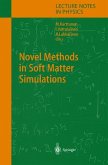The classical view on polymer crystallization basically focused on the expla- tion of a few macroscopically observable parameters like the thickness of the resulting lamellar structure and the corresponding growth rates. However, the emerging paradigm for the description of chain crystals is too simple and cannot account for the complex non-equilibrium processes responsible for structure f- mation on various levels, ranging from the nanometer up to the millimeter scale. This complexity detected by several novel experimental results led to a renewed interest in this "old" topic of polymer crystallization. These new ?ndings c- cern the early stages of the crystallization process, crystal formation in con?ned geometries like ultra-thin ?lms and the competition between (micro)phase s- aration and crystallization in copolymers and blends. In particular, high spatial resolution techniques such as atomic force microscopy provided deeper insight into the molecular organization of crystallizable polymers. Computer simu- tions based on microscopic processes were used to improve our understanding of how polymer crystals are nucleated and how they grow. New ideas emerged about possible multistage pathways which are followed during the formation of polymer lamellae. The importance and the consequences of the non-equilibrium character of polymer crystals got signi?cantly more attention. Links and ana- gies to growth phenomena and pattern formation in general are being developed. However, these ideas are still subject of intensive and controversial discussions.








